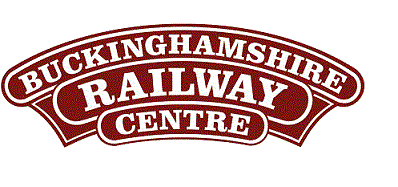
BRC Website Home
Quainton Virtual Stockbook - Railway Plant, Structures and Buildings
Harlington Signal Box

BRC Website Home
Quainton Virtual Stockbook - Railway Plant, Structures and Buildings
Harlington Signal Box


Photos: |
|
Harlington Box This signal box was relocated from Harlington, Bedfordshire, and rebuilt at Quainton. Harlington is a station on the former Midland Railway main line out of St Pancras between Luton and Bedford (Bedpan line), which was electrified in the 1980s and re-signalled, hence the old manually-operated signal-boxes were becoming redundant. The building stood on the down main platform at Harlington and is of timber construction with a ridged slate roof. The Harlington box was a LMS Railway 1941 rebuild of a Midland Railway design, 3 section signal box with a 40 lever frame in it. It is 35ft long, 14ft wide and stands 18ft high. It was transported from its British Rail resting place to Quainton in one piece, except the roof, by Brackmills of Northampton. QRS had brought the signal box complete and as the British Rail Engineers had a possession of the running lines, for the purposes of commissioning the colour light signalling controlled from the new power signal box at West Hampstead, they had kindly agreed to the Quainton team stripping out the box as soon as it closed. This was in part deemed necessary sadly because of the risk of the more valuable equipment going "missing". A small team from Quainton meet in a local pub in Westoning, Bedfordshire on the evening of the 31st May 1980 to spend the night and following day recovering the contents of the Harlington Signal box. The lever frame and all internal equipment had been stripped out of the signal box by the end of 1st June 1980. The risk of equipment going "missing" was confirmed by the fact that all the light bulbs were already missing when the team arrived. Fortunately the team had brought flood lights with them. One of the signal repeaters had already gone missing by this stage, as had the signal box clock, probably taken as souvenirs. Despite the new power box having taken over, many of the indicator lamps for points and signals were still a light. After the British Rail signal engineers arrived and isolated the low voltage supply, the Quainton team could start stripping out the equipment. The team split between a group in the operating floor and a gang in the bottom of the box disconnecting the various rods and linkages. The block instruments were carefully removed from the blockshelf, followed by the rest of the electrical equipment, including three telephones and numerous relays. By midnight the blockshelf was safety removed and work could continue on the lever frame. The move by road started on the 14th September and delivery safely completed the next day. At the following weekend the roof timbers were replaced and every effort was made to make the box watertight, with roofing felt, before the winter set in. By the middle of October this job was virtually complete. |


Photos: |
|
Original Quainton Box It was necessary to replace the original box at Quainton. The original Metropolitan Railway signal box was, mistakenly, burnt to the ground 3 days before the Quainton Railway Society took over the site in 1969. It was a 5 section pure Metropolitan Railway box, most Metropolitan Railway boxes were 3 section. Sizing measurements of the Quainton box have been calculated from surviving the boxes at Chesham and Chorleywood. It is highly likely that the Quainton Road Metropolitan Railway signal box was 12 foot wide by 16 foot to the eaves, and 27 foot 6 inch long. The corner posts are likely to be 7.5 inches square, the intermediate posts 4 inches and the panels between 5 foot. The height of the roof will have to be calculated later from ridge tile lengths, when a sample tile is recovered. As a comparison the Chorleywood and Chesham boxes are 12 foot wide by 17 foot long by 27 foot 6 to the eaves, but both are 3 section signal boxes. Photos show Quainton Road to have been a 5 section signal box, but appears to be the same width at the ends with the same stairs and verandah. Modern photos of Chorleywood and Chesham show that the landings are smaller but close examination shows where the tenons went in and the joists have been cut back, so probably both looked like Quainton Road originally. The Chesham signal box is taller because its wooden lower room is a slightly higher in the wood and the whole is sat on 18 courses of brick as well. One member of the clearance gang that erroneously burnt the old box has confessed to being a trainee on the job, but to save his well-known face at Quainton the authors of this article will remain silent! References: |

Photo: |

Photo: |
| Origin :- | LMS | Date Built :- | 1941 | Number :- | N/A |
| Type :- | Structure | Builder :- | ????? | Owner | QRS |
| Status :- | Operational | Location :- | Down yard |
Text © Quainton Railway Society / Photographs © Quainton Railway Society or referenced photographer
Email Webmaster
Page Updated: 28 June 2019